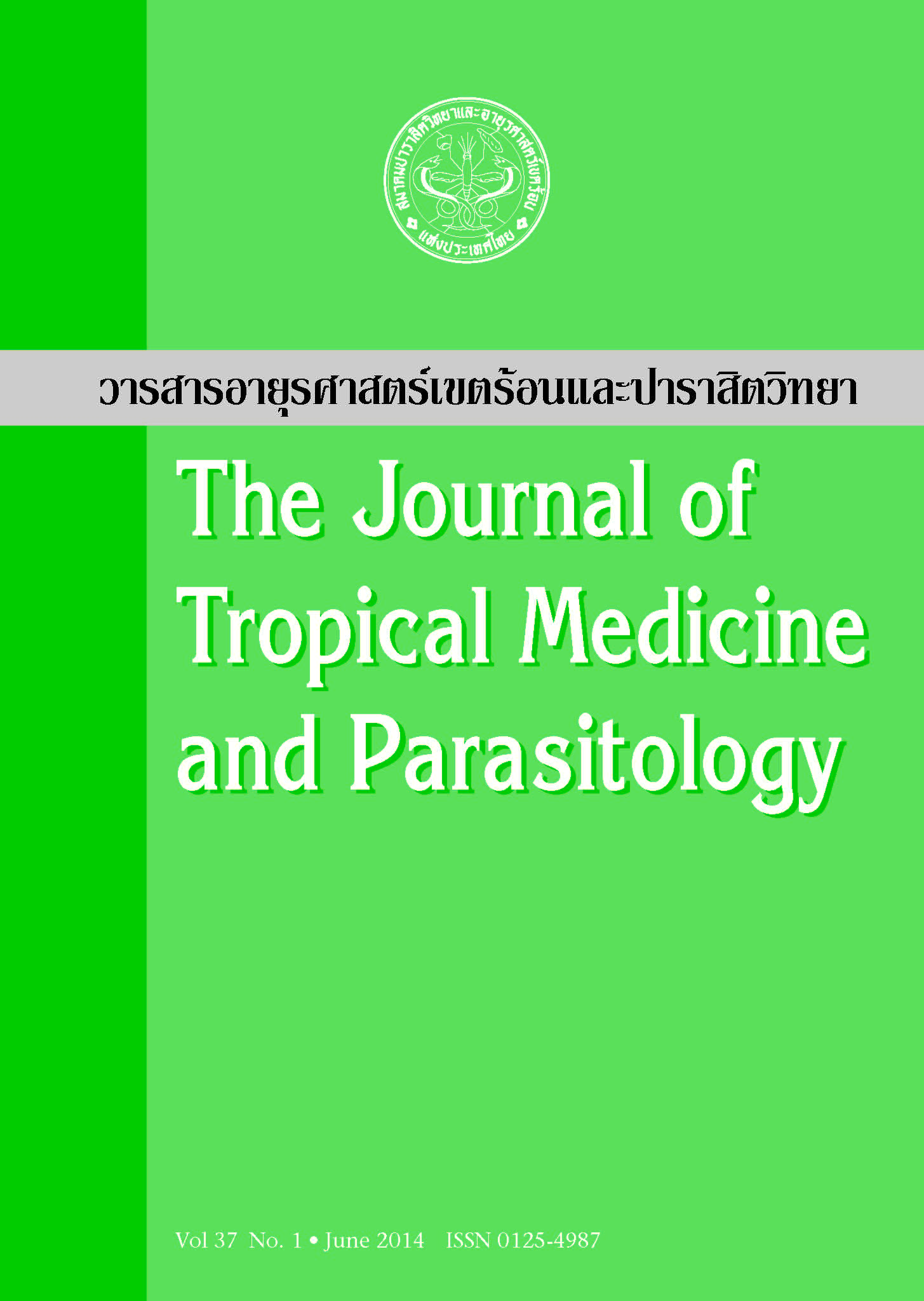Prevalence of Giardia duodenalis and factors associated with its infection in water buffaloes in Northeast Thailand
Main Article Content
บทคัดย่อ
Giardia spp. is the intestinal protozoa causing giardiasis in animals and humans. Transmission of the disease occurs via the fecal-oral route between animals to animals and animals to humans. The objectives of this study were to determine the prevalence of Giardia duodenalis, identify the assemblage, and analyze factors associated with its infections of water buffaloes in Northeast Thailand. A total of 567 buffalo fecal samples were collected from northeast provinces including Sakon Nakhon, Buri Ram, Ubon Ratchathani, Roi Et, Si Sa Ket and Surin. Fecal samples underwent zinc sulphate floatation and nested PCR (nPCR) based on the SSU-rRNA gene. The overall prevalence of Giardia duodenalis infections by nPCR was 0.4% (2/567). The positive DNAs were sequenced and compared to reference nucleotide sequences from GenBank. The prevalence of G. duodenalis infections in water buffaloes among six provinces was ranged between 0 to 1.6%. Buri Ram had the highest individual infections (1.6%, 1/62) and the herd prevalence was 0.7% (2/276). Regarding the factors associated with G. duodenalis infections, sex, age, herd size, and geographical landscape (basin) were brought to analysis, but they were not statistically significant.

